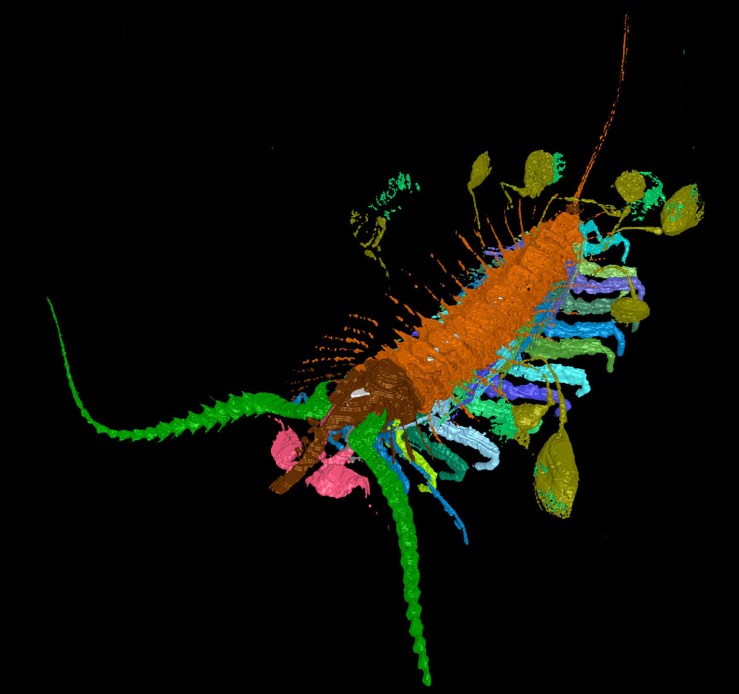
An ancient creature which carried its young like tiny, swirling kites is the latest discovery by researchers at the Museum, working with Yale Peabody Museum of Natural History, Leicester University, and Imperial College London.
Found in a deposit of rocks known as the Herefordshire Lagerstätte, which preserves ancient remains with superb detail, the 430 million year old fossil shows that the marine animal carried its young in kite-like capsules tethered to the parent’s body, earning it the moniker “Kite Runner” after the 2003 novel by Khalid Hosseini.
The small creature has been officially named Aquilonifer spinosus, from “aquila”, meaning eagle or kite, and “fer” which means carry. It grew to just over a centimeter long, not including the tail spines, and there is only one known fossil of the animal.

Modern crustaceans employ a variety of strategies to protect their eggs and embryos from predators — attaching them to limbs, holding them under a carapace, or enclosing them within a special pouch until they are old enough to be released — but this example is unique. We know of nothing alive today which attaches the young by threads to its upper surface; perhaps this strategy was less successful and became extinct.

Aquilonifer spinosus lived on the seafloor during the Silurian period, with a variety of other animals including sponges, brachiopods, worms, snails and other mollusks, a sea spider, a horse-shoe crab, various shrimp-like creatures, and a sea-star.
The researchers were able to describe Aquilonifer spinosus in detail thanks to a virtual reconstruction. They reconstructed the animal and the attached juveniles by stacking digital images of fossil surfaces that were revealed by grinding away the fossil in exceptionally thin increments. You can see this animation here:
The Yale Peabody Museum of Natural History, the Natural Environmental Research Council, the John Fell Oxford University Press Fund, and the Leverhulme Trust supported the research.


[…] has produced many exciting discoveries over the years, from prehistoric parasites to an ancient ‘kite runner’. The new fossil is the first of its kind from this […]